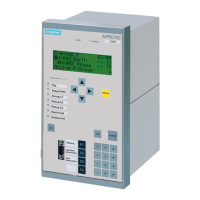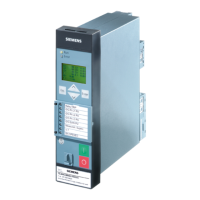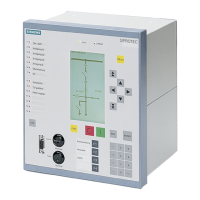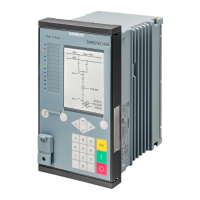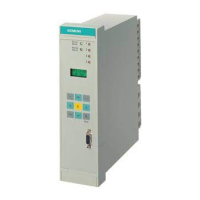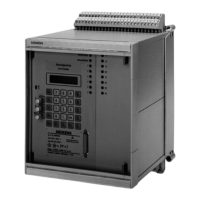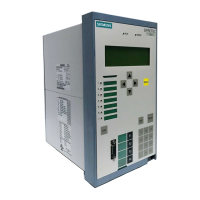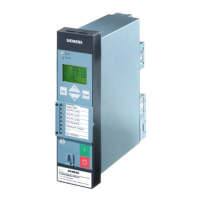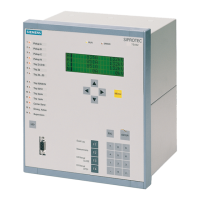2.16 Function Control and Circuit Breaker Test
229
7SD610 Manual
C53000-G1176-C145-4
External functions may be controlled by this indication via an output contact. Examples
are:
• Automatic reclose devices,
• Further additional devices or similar.
Spontaneous
indications
Spontaneous indications are fault indications which appear in the display automatical-
ly following a general fault detection or trip command of the device. For the 7SD610,
these indications include:
„Relay PICKUP“: protective function that picked up;
„PU Time“: Operating time from the general pickup to the dropout
of the device, in ms;
„TRIP Time“: the operating time from general pickup to the first trip
command of the device, in ms;
2.16.1.5 Tripping Logic of the Entire Device
Three-pole tripping In general, the device trips three-pole in the event of a fault. Depending on the version
ordered (see Section A.1, „Ordering Information“), single-pole tripping is also possible.
If, in general, single-pole tripping is not possible or desired, the output function
„Relay TRIP“ is used for the trip command output to the circuit breaker. In these
cases, the following sections regarding single-pole tripping are not of interest.
Single-pole tripping Single-pole tripping only makes sense on overhead lines on which automatic reclo-
sure is to be carried out and where the circuit breakers at both ends of the line are
capable of single-pole tripping. Single-pole tripping with subsequent reclosure is then
possible in the event of a single-phase fault in the faulted phase; three-pole tripping is
generally performed in case of two-phase or three-phase faults with and without earth.
Device prerequisites for phase segregated tripping are:
• Phase segregated tripping is provided by the device (according to the ordering
code);
• The tripping protective function is suitable for pole-segregated tripping (for exam-
ple, not for frequency protection, overvoltage protection or overload protection),
• The binary input „>1p Trip Perm“ is configured and activated or the internal au-
tomatic reclosure function is ready for reclosure after single-pole tripping.
In all other cases tripping is always three-pole. The binary input „>1p Trip Perm“
is the logic inversion of a three-pole coupling and activated by an external auto-reclo-
sure device as long as this is ready for a single-pole auto-reclosure cycle.
With the 7SD610, it is also possible to trip three-pole when only one phase is subject-
ed to the trip conditions, but more than one phase indicates a fault detection. This can
be the case e.g. if two faults occur in two different places of which only one is within
the range of the differential protection. This is selected with the setting parameter
3pole coupling (address 1155), which can be set to with PICKUP (every multi-
ple-phase fault detection causes three-pole trip) or with TRIP (in the event of multi-
ple-phase faults in the tripping area, the tripping is always three-pole).
The tripping logic combines the trip signals from all protective functions. The trip com-
mands of those protective functions that allow single-pole tripping are phase segregat-
ed. The corresponding indications are named „Relay TRIP L1“, „Relay TRIP
L2“ and „Relay TRIP L3“.
www . ElectricalPartManuals . com
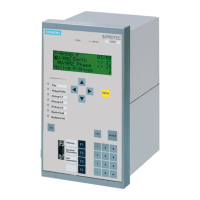
